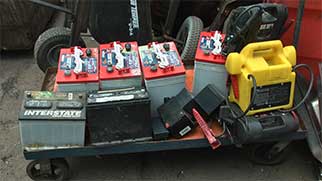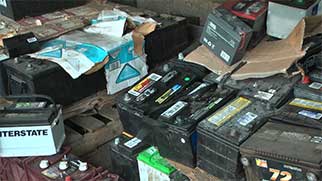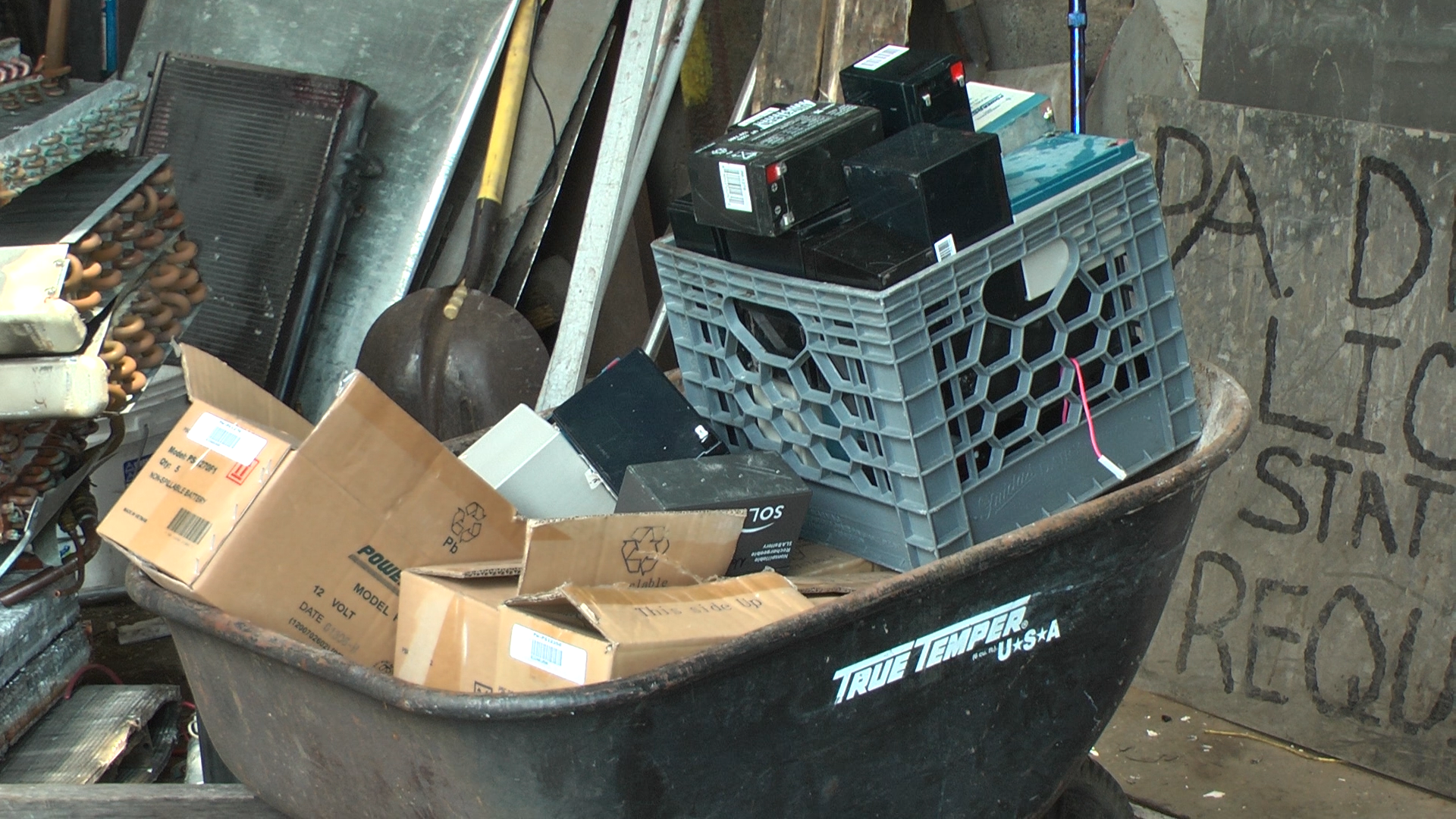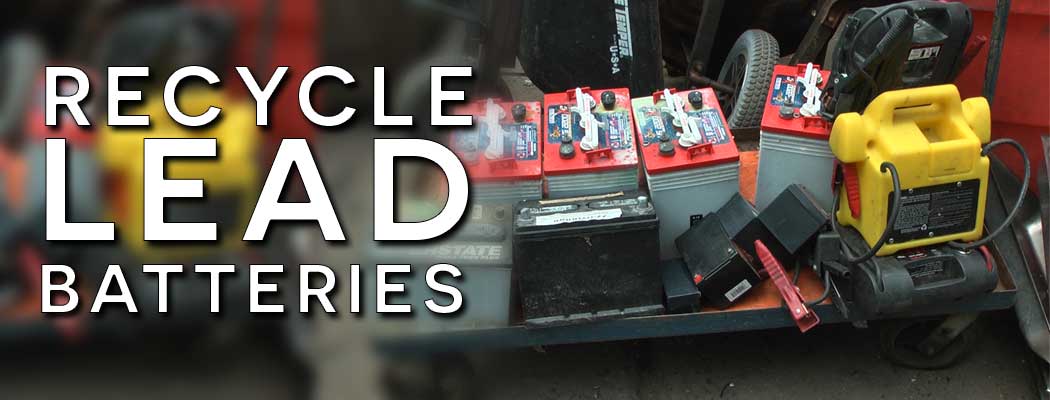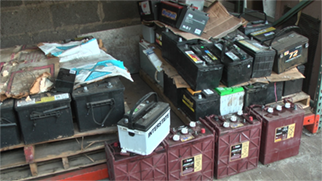M. DUNN RECYCLING
Cash to recycle Lead Batteries
Types of Batteries that can be recycled
- Car Batteries
- Truck Batteries
- Golf Cart Batteries
- Toy Car Batteries
- Batteries from Emergency Lighting
- Xray Film
Lead enjoys one of the highest recycling rates of all materials in common use today. This is a result of its fundamental properties, good design and the ways in which it is used, which make lead-based products easily identifiable and economic to collect and recycle.
As a result, over half of the lead produced and used each year throughout the world has been used before in other products. What is more, because lead is a naturally occurring element, the quality of the recycled lead is identical to that of primary metal from mining.
The use of lead has evolved over the years, with a significant growth in recyclable uses. Today about 85% of lead is used in lead batteries, all of which are recoverable and recyclable. Europe and North America have a battery recycling rate close to 100% – and most others share the possibility of 100% recyclability.
Interesting Facts About Lead Batter Recycling
- Nearly 90 percent of all lead-acid batteries are recycled.
- Reclaimers crush batteries into nickel-sized pieces and separate the plastic components. They send the plastic to a reprocessor for manufacture into new plastic products and deliver purified lead to battery manufacturers and other industries.
- A typical lead-acid battery contains 60 to 80 percent recycled lead and plastic.
- The lead grids, lead oxide and other lead parts are cleaned and then melted together in smelting furnaces.
- The molten lead is poured into ingot molds. Large ingots, weighing about 2,000 pounds are called hogs. Smaller ingots, weighing 65 pounds, are called pigs. After few minutes, the impurities, otherwise known as dross, float to the top of the still-molten lead in the ingot molds. The dross is scraped away and the ingots are left to cool.
- When the ingots are cool, they are removed from the molds and sent to battery manufacturers, where they are re-melted and used in the production of new lead plates and other parts for new batteries.
- Lead batteries are the environmental success story of our time. More than 99% of all battery lead is recycled. Compared to 55% of aluminum soft drink and beer cans, 45% of newspapers, 26% of glass bottles and 26% of tires, lead-acid batteries top the list of the most highly recycled consumer product.
- The lead battery gains its environmental edge from its closed-loop life cycle. The typical new lead battery contains 60 to 80 percent recycled lead and plastic. When a spent battery is collected, it is sent to a permitted recycler where, under strict environmental regulations, the lead and plastic are reclaimed and sent to a new battery manufacturer. The recycling cycle goes on indefinitely. That means the lead and plastic in the lead-acid battery in your car, truck, boat or motorcycle have been - and will continue to be -- recycled many, many times. This makes lead battery disposal extremely successful from both environmental and cost perspectives.
